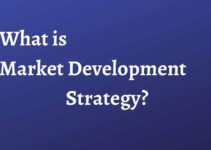Introduction
Decision-making plays a significant role in the management of businesses and companies. In fact, it’s one of the main functions and roles of managers. They have to make a lot of decisions consciously or unconsciously during working hours. Today, we’ll discuss what is decision making in management; various steps involved in the process, analysis of alternatives, their types, significance, theories, guidelines, and things to avoid.
What is Decision Making in Management?
Decision-making is the rational process of choosing from various alternatives. Every decision results in the form of action, opinions, and recommendations. When you have got a lot of options and choices, you’re pondering over various choices by remaining neutral, and choosing one option is the process of decision-making.
Steps in Decision Making
When we talk about the decision and deciding something, then it is a sequential activity and a structural process that facilitate the outcome. Some of the main steps are as follows;
- Setting goals and developing objectives
- Prioritizing and categorizing objectives
- Creating a selection criteria
- Recognizing alternatives
- Analyzing various alternatives against selection criteria
- Selecting an option that best suits your selection criteria
- Implementing the chosen decision
Decision Making vs. Problem Analysis
Decision-making and problem analysis both have a lot of similarities along with some distinct differences. The focus of the decision is on challenges and problems, and the managers collect and analyze data before choosing any option.
On the other hand, problem analysis comprises of studying the problem by setting boundaries, developing criteria for the selection of alternatives, and making a conclusion based on the available information.
It’s important to keep in mind that problem analysis doesn’t always result in the form of a conclusion or outcome. But a clear result is the main element of the decision-making process.
Optimizing vs. Satisficing
Usually, a person has the access to limited and finite information while deciding. When you have limited access, then it becomes nearly impossible to be objective, and it results in the form of flawed decisions.
Maximizer takes a bit longer time to determine the optimum choice. The satisficer would identify the flaws and imperfections, and it develops a faster but less optimum decision. You should perceive it as a spectrum, where every decision has a different level of perfection based on risk and mistake.
Rational vs. Intuitive
You can say it’s the perspective of the conscious and subconscious mind. The conscious mind needs rationality, logic, input, and effort in order to make explicit decisions or choices. On the other hand, the subconscious is intuitive and automatic; it makes an immediate decision by compiling the data rapidly.
Positional vs. Combinatorial
Positional is the approach of looser, where you develop a plan and setting for the uncertain future, instead of following any concrete or the real thing. The combinatorial has a concrete, firm, and narrowed-down final outcome, where you make a series of small decisions in order to develop a link between the first and the last stage.
Analysis of Alternative
The main element of the decision process is studying various options against your judgment criteria. The judgment criteria comprise of alignment of preferences, disadvantages, advantages, benefits, and cost. For instance, you’re deciding the location of your shop, and then your criteria would be proximity to customers, distribution, transportation access, skilled labor availability, and rental cost. Different factors have their significance relevant to the business needs, and the owner would decide accordingly.
The decision-maker has to analyze the strengths and weaknesses of various options, and it becomes a tiresome task where you’ve got a lot of alternatives. Elements like personal views, emotions, and time limitations play a significant role while analyzing the alternatives. Often, decision-makers require extra time for collecting information, and they decide before getting fully prepared.
Types of Decision Making
There are three main types of decision-making processes, and they’re as follows;
Avoiding
As the name implies, the decision-maker doesn’t choose an option, and they do it for many reasons like;
- Not enough information to opt a choice among different options
- The risk and negative outcome of choosing the wrong option is much higher than the benefits of choosing the right option
- The status quo would keep ongoing, and there’s no pressure for making a choice
- The people analyzing various options don’t have a say in deciding
Supreme Court of the USA and its regular decisions are a very good example of avoiding decision type. Often, the court refused to hear and precede the case because the lower court didn’t consider the issue valid.
Problem Solving
Problem-solving activities would complete when the decision-makers would reach any satisfactory solution. Psychologically speaking, it’s the process when you plan to achieve your desired goals and objectives from the current state. It comprises of defining the problem, analyzing and evaluating the available information, and various options.
Problem Seeking
The focus of the problem-solving approach is to discuss the scope of the issue, and it defines its scope and key mission dimensions poorly, either too small or big. Instead, they should step back, and reanalyze the information again. You should consider this activity problem seeking because you would have to go back to the main problem and readdress the problem.
Significance of Decision Making
- In the business cycle, the top management requires a constant supply of input in the form of technical and financial information in order to achieve optimum profit on the company’s assets.
- Companies make decisions to achieve their goals
- Whether the company is big or small, the contingent circumstances may come up like changing employees and market conditions, and they require quick decisions
- Management performs functions like planning, designing, controlling, performance evaluation, and organizing, and they all demand decisions
- Decisions help you motivate employees, organizational structure, develop a course of action, and define objectives
Theories of Decision Making
Some of the main decision-making theories are as follows;
Traditional/Intuition Theory
The decision-makers decide based on the random hunch or intuition without keeping in mind all the impacting factors and various options. People make decisions whatever they think is right or their feelings.
Classical Theory
It’s contrary to the traditional approach, where you carefully analyze various factors and then decide. It plays a significant role when you’re certain about various conditions, and it is a rare phenomenon
Behavioral Theory
As the name implies, here you make decisions based on the analysis of real-life situations.
Guidelines for Effective Decision Making
- Setting clear goals and objectives
- Make sure that your decisions are relevant to the company’s goals
- Following the diagnostic model while deciding
- Bringing employees and subordinates on the same page while making decisions
- Implement the decision successfully that you have selected
- Evaluate the outcomes of your implementation
- If the decision doesn’t provide the desired results, then revise it flexible
Conclusion: What is Decision Making in Management? Steps, Types, Theories
After an in-depth study of what is decision making in management; various steps in the process, its types, different theories, and guidelines; we’ve realized that making a decision is a process of making a choice by analyzing various alternatives. If you’re deciding for your company, then you should keep in mind various guidelines and make the choice carefully.

Ahsan Ali Shaw is an accomplished Business Writer, Analyst, and Public Speaker. Other than that, he’s a fun loving person.


